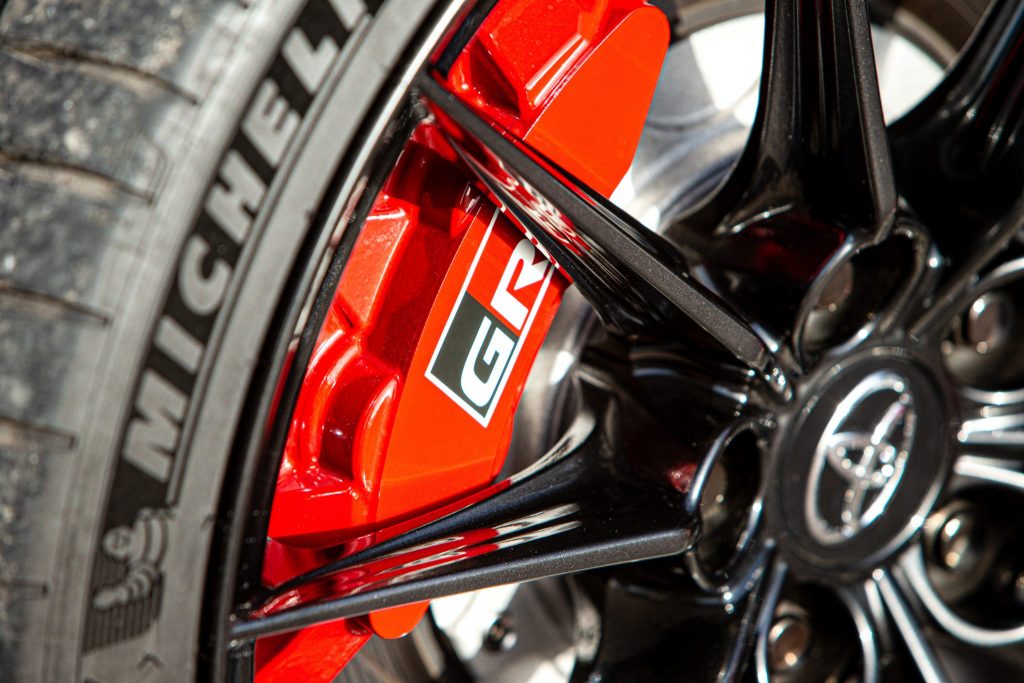Richard Tipper has been valeting cars of all shapes and sizes since 1989, and can spend up to a week detailing every inch of a car. He has gone through more cleaning accessories and products than you’ll find on the shelves of an automotive superstore. These are Tipper’s Tips for the Hagerty community.
It’s answer time again this week, with more solutions to the car cleaning tips you wanted to know. This time around we’re looking at the ever-popular topic of cleaning wheels (a topic you can read about in more detail here) and looking after brake discs after washing a car, plus I share a surprisingly simple solution to a perennial interior cleaning issue, pet hair.
Mike Lusby asks: What’s the best way of stopping brake discs rusting after washing and cleaning wheels?
You won’t, is the short answer. The only ones that won’t rust are the carbon ceramics for obvious reasons, because they’re not made of iron. But a bare iron surface will rust after a car has been cleaned. It’s easy to remove though – just drive the car for a few hundred yards and lightly trail the brake pedal, or perform a few stops, so the pads clean the discs for you.
What is important is that if you are washing a car with the view of putting it away for a long period of time, then it’s essential that you thoroughly dry the disc and pad surfaces so they don’t bond together by the time you next move the car. You’ll need to be quite aggressive to free it otherwise, and put up with an unnerving grinding for the first few miles. If it gets really bad after being left like this for six months or so, you may end up having to buy new discs.

Max Hawksworth asks: My car’s wheels attract loads of brake dust, and they’ll be filthy again just a week after cleaning. Is there anything that can be applied so that I can just blow or rinse the dust off rather than doing a full wheel wash?
There’s more of an engineering answer than a detailing one to this question: I would consider changing the pads. Softer pad materials give off a lot of brake dust and there’s no real way of preventing it attaching to the wheels.
That said, if you’re cleaning your car weekly, the dust won’t have had long enough to properly bond to the wheels, so it shouldn’t be difficult to remove and won’t do your wheels any damage. But if you’re getting excessive amounts of dust, I’d recommend changing to a harder pad.
Mike Gill asks: Could you give me some advice on cleaning carpets and parcel shelves, please? I vacuum my car but find things like pet hair almost impossible to remove.
Go to a pet shop and get a pet hair removal tool, which can be used on carpets to remove dog hair. You need to be a little more careful on parcel shelves because it’s typically quite a thin fabric stuck to a card or wooden shelf, and it’s easy to damage. But another tried and trusted method is to wrap sticky tape around your hand and pat away at the area, slowly picking up pet hairs.
Vacuuming can work, but ideally you’d want to use a brush attachment rather than the crevice tool – the latter can score lines into the material if you’re not careful.
Read more
Elbow Grease: Manky Minilites and smelly seats
Reviewed and Rated: The best wiper blades for your car
Socket Set: Filing needn’t be a rough experience










Thanks for the tips on removing dog hair from carpets and parcel shelves. I will take particular note of advice on using a brush rather than the crevice tool especially on the parcel shelf. Why I didnt think of the sticky tape on your hand trick is beyond me!
Once read a great tip for removing awful doggy and sick smells form the car – after you’ve mown the lawn, but the fresh cuttings in a large open bag and simply leave it there overnight. I think it was in the Telegraph’s ‘Honest John’ column many years ago. Shame that he’s been given the boot by the paper but that’s another story…
Another tip for dog hair – you can use rubber gloves (washing-up type gloves) to extract it very easily. Simply drag your gloves hand flat over the surface and it’ll draw the fur out of the carpet so you can vacuum it up.
I would only do this on woven materials though – non-woven carpets (such as line the boots of cheap hatches) are prone to balling and fluffing up unnaturally if you subject them to this kind of friction.